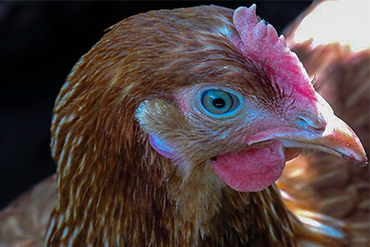
Our Kitchen Garden
- Kitchen Garden
Our kitchen garden was carved out of a neglected backyard and built upon our love of food and a commitment to reduce our footprint a little more each day than the day before. It started in 2003 with the establishment of perimeter planting beds for the espalier fruit tree orchard and a screen planting of callistemons (callistemon citrinus). Then came a raised herb garden and seven large, raised vegetable beds. Why seven? Well, after consulting various organic gardening books and based on our mediocre vegetable gardening attempts in another space and time, we decided we needed a four-bed rotational system.
However, we also aspired to produce enough fresh asparagus and artichokes to feast like royalty. Plus, a berry patch that satisfied our lustful yearning for their luscious fruit, with enough to preserve! So that meant we needed a permanent bed and then another two beds to alternate the strawberry patch every three years.
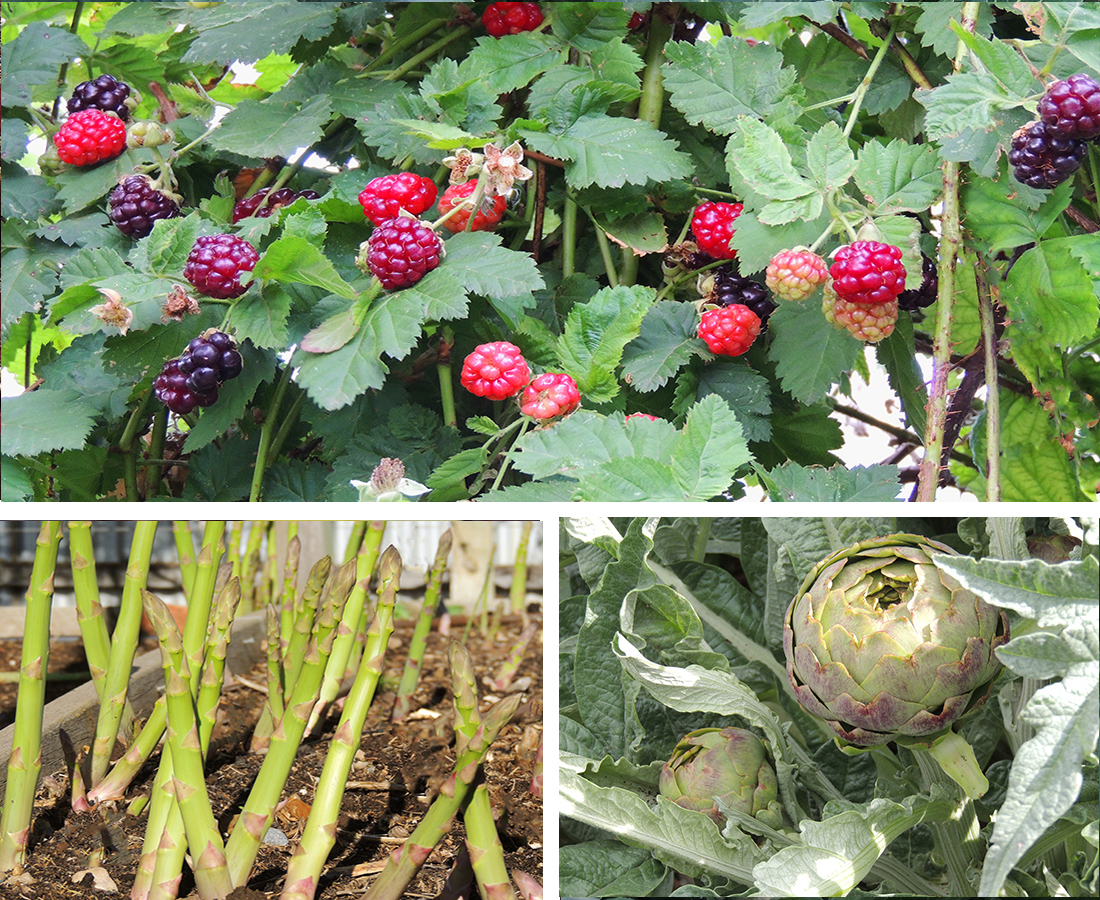
With the garden design mapped out to include space for a water tank, chook pen and compost bins, a digger was brought in to literally carve up the backyard and mound the soil in what was to become the raised beds. I stood there speechless as the barren soil was transformed into a mountainous disaster zone within a matter of hours.
But Al, full of excitement, ordered the digger man around with such conviction and authority that I knew this was the beginning of something far greater. Pushing aside my overwhelming sense of calamity, I began to focus on our vision of living according to the seasons and preserving an abundant harvest.
Months passed, with regular trips to the local hardware to purchase more wooden planks, stumps, and nails. We built over three hundred meters of raised beds in 6 months! Splinters and blisters from hard toil on soft hands, sunburn and dehydration from the summer heat and chilly winter winds did not deter us. As each bed was completed, we stood proud beside our achievement and after a brief celebratory moment, we planned the commencement of the next. We knew lingering, procrastination and the distractions of pursuing other interests would hinder our progress.
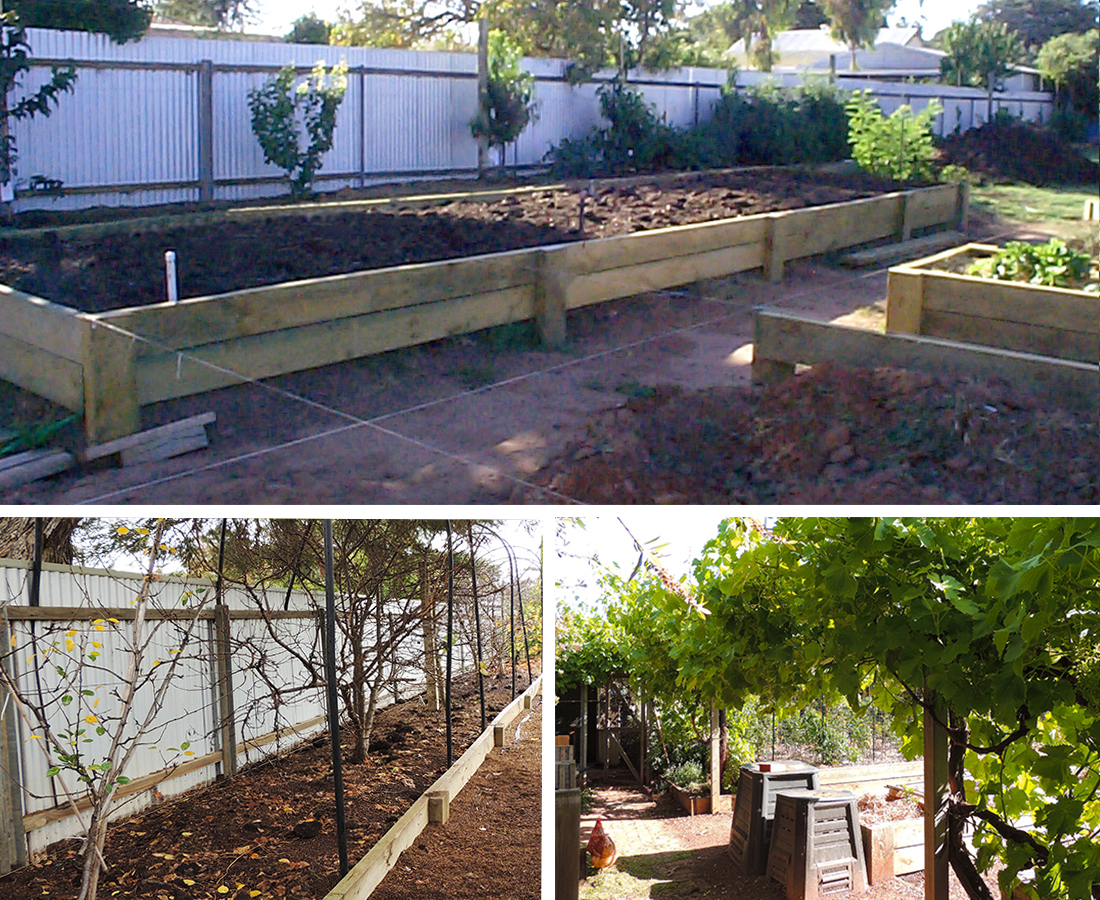
 Once the infrastructure bones were completed, the joy of planting commenced. Our weekend adventures now included trips to fruit tree nurseries, speciality suppliers and stopping anywhere that might offer interesting plants, decorations, or hardware for the garden.
Once the infrastructure bones were completed, the joy of planting commenced. Our weekend adventures now included trips to fruit tree nurseries, speciality suppliers and stopping anywhere that might offer interesting plants, decorations, or hardware for the garden.
Our garden has grown as we have grown as gardeners. Another water tank was added to harvest more winter and spring rain for summer and autumn watering. The chook pen was expanded, and another two compost bays have been added so we can recycle the excess garden vegetation and prunings to produce our own hot compost. This is used continuously to enrich the soil.
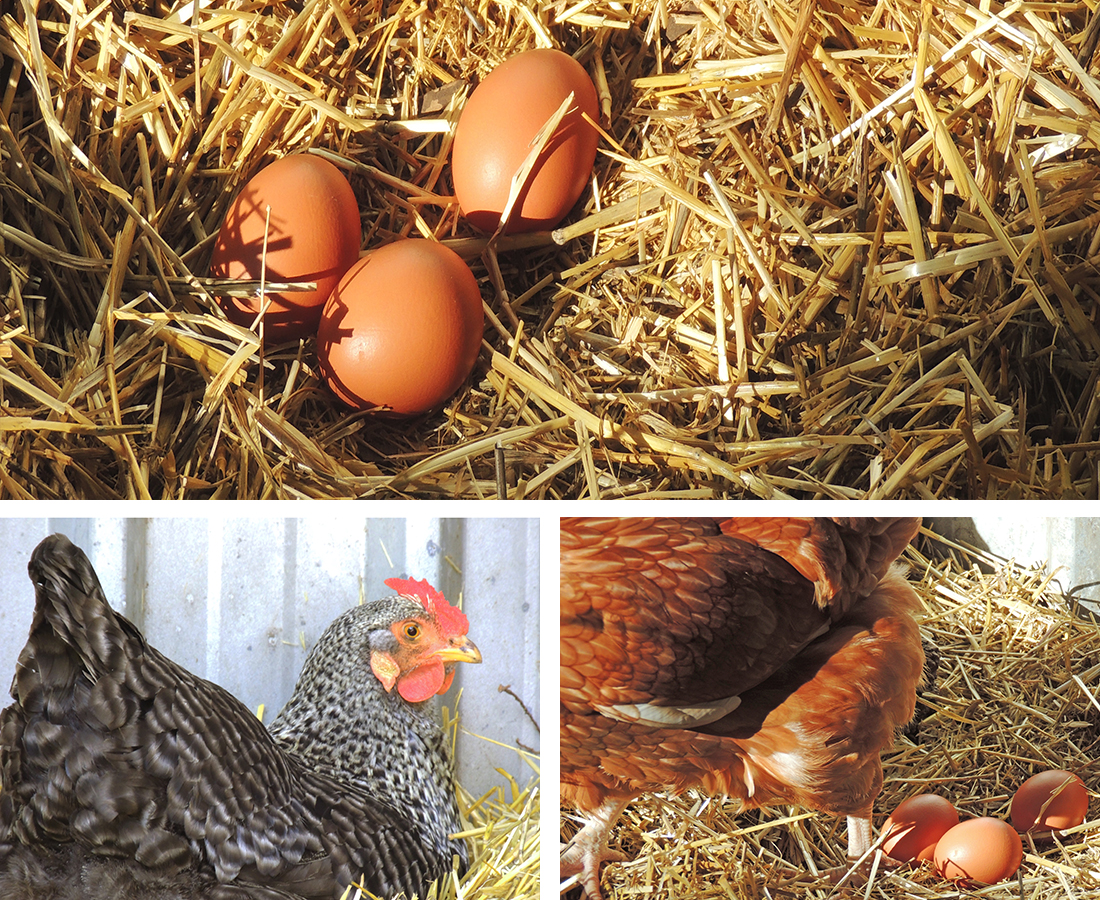
Al built a worm farm, by converting an old fridge, to recycle our kitchen waste into invaluable worm castings to further enrich the soil. Large tractor rims and pots, found after a foraging expedition, now grow our invasive herbs and vegies: horseradish, a variety of mints, Jerusalem artichokes and fennel. A heritage concrete laundry trough is home to wasabi and Vietnamese mint. Then we added another two raised beds to alternate our potato patch.
But a garden is never stagnant, particularly a kitchen garden. A changing season ushers in crop rotations, raising and planting seedlings to be followed by nurturing the soil and plants through weeding, watering, pruning, mulching, and composting before the harvest. Our garden has been turned over and is now set for summer.
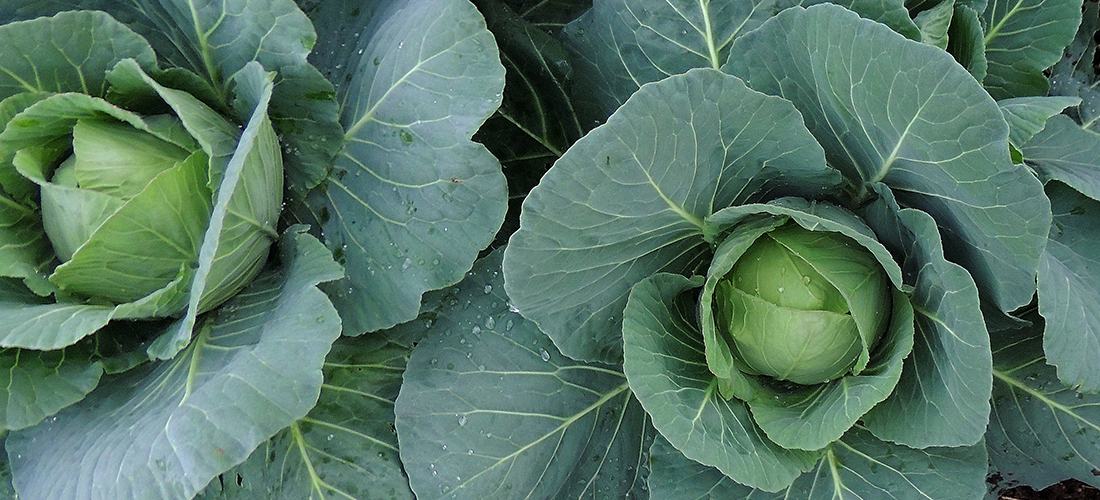
The garlic and potatoes have been harvested and are now curing for storage. After the annual spring asparagus feast, they have been left to run to fern and berries are now forming on the female plants. The cauliflower, cabbage–red and sugar loaf, broccoli and romanesco, broad beans and peas have been harvested and the only remnant winter greens-kale and silver beet remain.
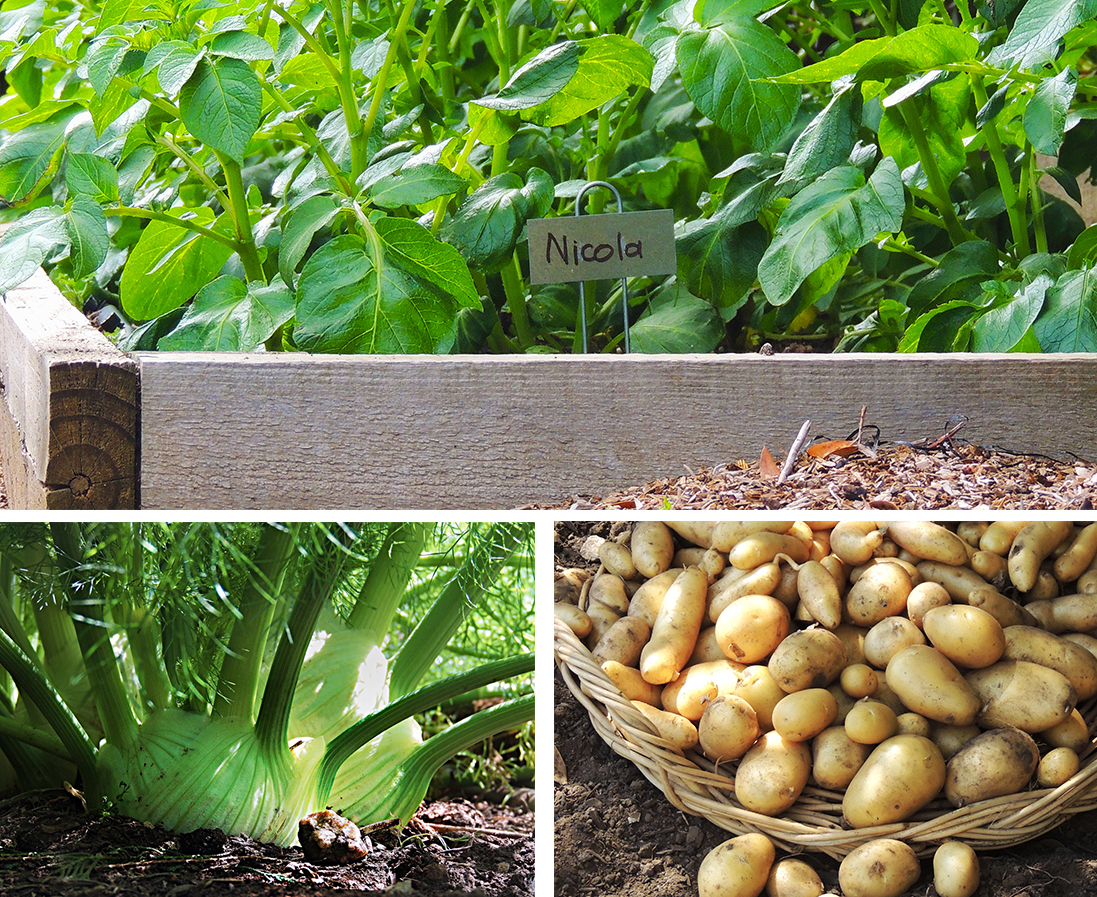
The parsnips, turnips, swedes, and carrots were a welcome addition to hearty soups and casseroles or roasted whole to nourish the winter soul. The Florence fennel and celery have made way for the Lebanese cucumbers. As for the citrus crop of oranges, blood oranges, lemons, limes, mandarins, and grapefruit, what was not juiced, incorporated into winter salads, or shared with family and friends, has been transformed into marmalades, mustard fruits, and cordials. Orange, yellow, and golden jars glisten in the pantry and beckon to be opened.
A snapshot of our 2013 winter garden and pantry, filled with jams, jellies, pickles, preserves, cordials and sauces made from our produce was captured by the ABC TV Gardening Australia TV show with celebrity presenter Sophie Thomson
